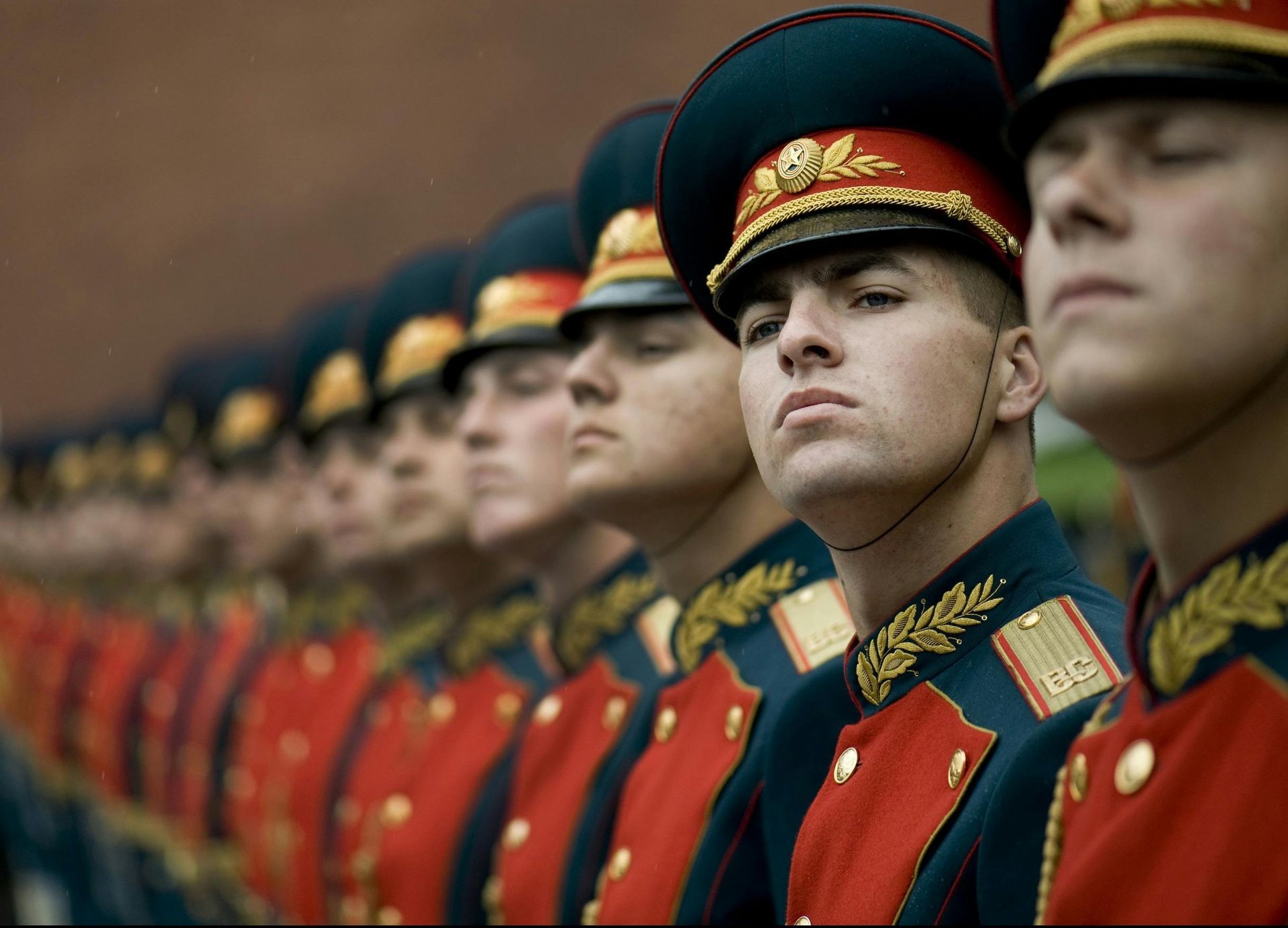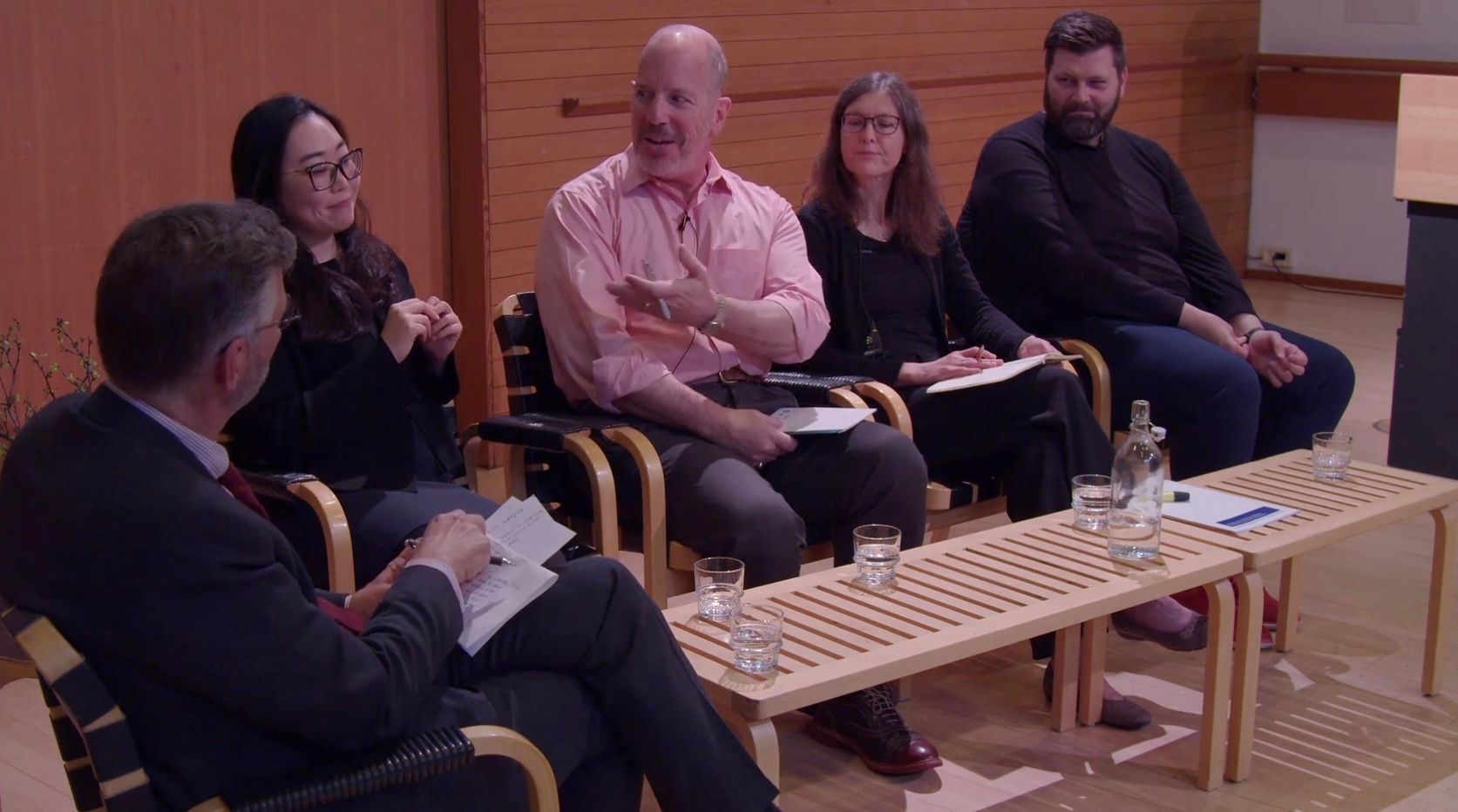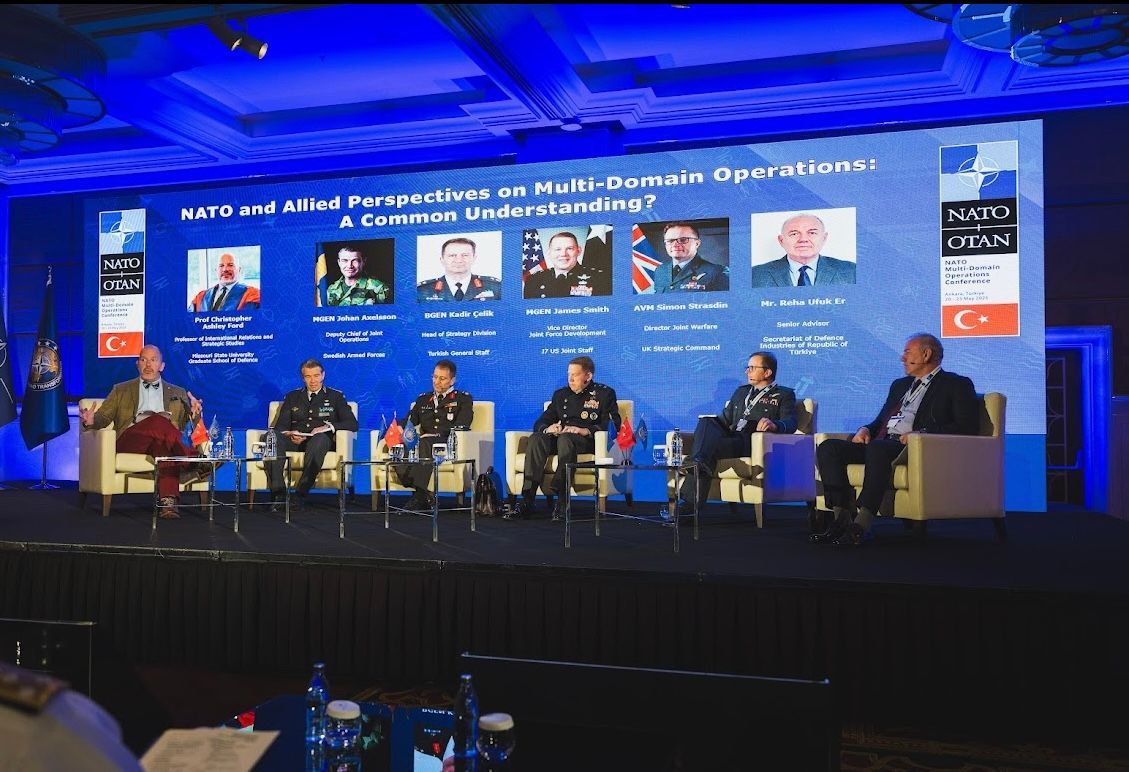The Treaty After Next?
Note:
Below appears the written version of remarks Dr. Ford presented to a working group on the future of U.S.-Russian arms control as part of the Project on Nuclear Issues (PONI) at the Center for Strategic and International Studies on October 6, 2010.
Whatever happens to the “ New START ” strategic treaty with Russia currently pending before the U.S. Senate – and whenever this occurs – it may useful to start giving some thought to where strategic arms control should go next. Let me offer some thoughts.
There remains a deep attachment in arms control circles to the idea of numerical reductions, so one should not be surprised to see the “treaty after next” debate shifting quickly into questions about how far below “New START” levels we can go, or at least how far we can persuade the Russians to accept. For an arms control community much of which had previously fixated upon the pleasantly round number of 1,000 “operationally deployed” warheads – to the point, as of early 2009, that this rather arbitrary number was seen as something of a political litmus test for our seriousness about eventually moving to “zero” – it must have been very disappointing for the current treaty to set a limit of 1,550 warheads and fail to address non-deployed weapons at all. (And this from a President who had taken such pains to encourage the belief that his leadership would finally set the world on a path to nuclear weapons abolition!) So we can be sure that there will be a push to bring the warhead numbers down significantly in both regards. After all, Obama Administration officials have always described “New START” as merely “a first step forward ... on a longer journey.”
But the numerical road has its pitfalls, not least because the “New START” approach seems carefully to have avoided forcing the United States – or Russia, one presumes – to make any tough decisions about its nuclear doctrine. (Coming down to 1,550 deployed warheads from a range band under President Bush’s Moscow Treaty of 2002 that started at 1,700 and ran to 2,200 was something, for instance, but not precisely an eye-opening reduction.) And no one should have missed the fact that back when he worked for President George W. Bush, Defense Secretary Robert Gates said that he would get “pretty nervous” below 1,500 deployed warheads in light of ongoing nuclear weapons proliferation and Russian and Chinese nuclear modernization efforts. (One might suspect it no coincidence that the Obama treaty ended up coming in at 1,550.)
Press accounts have suggested that somewhere, and perhaps even before the magic political number of 1,000 deployed warheads, the United States will have to revise its plan and indeed its basic philosophy for nuclear targeting in significant ways. All this suggests that in its quest to give – as he promised in Prague in April 2009 – a cheerily omnipotent “Yes We Can!” answer to the challenge of creating “a world without nuclear weapons,” President Obama has already picked what may be the only low-hanging fruit. Any meaningful follow-on cuts would be vastly more difficult and problematic. Since even this notably modest “New START” agreement apparently ended up being a good deal trickier to negotiate with the Russians than anticipated – not so long by Cold War standards, it must be admitted, but rather longer than expected by overconfident White House officials – one should perhaps not hold one’s breath for quick and dramatic progress next time.
Having now declassified figures revealing that the United States has a total of 5,113 nuclear warheads in its arsenal, the Obama Administration also must struggle – in any follow-on negotiations – with the awkward fact that on top of what one presumes is at least a comparable number of Russian strategic weapons, the Kremlin possesses by some counts perhaps even as many as 6,000 additional nuclear weapons of the so-called “non-strategic” variety. (The total Russian arsenal of nuclear weapons, therefore, might today be twice the size of our own.) The time is thus swiftly passing when Russia’s huge stock of non-strategic nuclear weapons (NSNW) can be ignored in the name of arms control progress and a new Russo-American “reset.”
Few, if any, Russian NSNW sit within reach of U.S. targets, of course, but they can present a potent threat to our friends and allies in Europe and East Asia. And this is a threat that Russia seems keen to emphasize, with a new nuclear doctrine emphasizing their use, periodic exercises that involve threats or even use against NATO member Poland , and showy announcements of NSNW gunboat diplomacy to Kaliningrad as part of a (successful) effort to intimidate the Obama Administration into walking back Bush Administration missile defense plans in Europe. This issue can be skirted no longer, and the Obama Administration clearly recognizes this, having promised in its 2010 Nuclear Posture Review to “[a]ddress non-strategic nuclear weapons, together with the non-deployed nuclear weapons of both sides, in any post-New START negotiations with Russia.” NSNW, it declared, “should be included in any future reduction arrangements between the United States and Russia.”
Including NSNW in arms talks, however, will not be easy. While the U.S. may have at least some bargaining power from the fact that it still deploys a comparatively tiny number of residual American NSWS on NATO soil – a fact that is itself deeply controversial within NATO, with some allies desperately wishing them gone and others feeling these weapons to be critical barometers of seriousness of the trans-Atlantic alliance and in any event a foolish capability to abandon precisely because Russia still threatens Eastern European NATO members, and not just with nuclear weapons – Russia seems to invest a great deal of political and military doctrinal capital in its non-strategic arsenal. NSNW, in short, seem vastly more important to Russian military planners than to American ones.
Because of the asymmetry of NSNW doctrinal reliance and “facts on the ground,” bringing these weapons into the Russo-American arms control discussion will be difficult: Kremlin negotiators aren’t known for giving up something for nothing, and they’ll likely aim squarely for things like the missile defense capabilities it is (I would argue) very much in our interest to keep. Moreover, despite the occasional anti-NATO rant, one suspects that officials in Moscow probably really care about NSNW in large part order to counterbalance China’s vast numerical superiority in conventional arms along Russia’s sprawling Siberian frontier. If so, it will likely prove doubly difficult to persuade Russia to countenance any significant NSNW reductions through bilateral negotiations with Washington. After all, Washington’s nuclear (or conventional) posture may not really be the main issue here at all.
This points to a deeper problem with the numerical disarmament agenda that presently seems to be U.S. policy. To judge from its present nuclear posture and doctrine, Russia seems to have no genuine interest in the oft-proclaimed U.S. objective of “zero” in the first place – and it regards a large arsenal of nuclear weapons as critical to Russian security in the face of American (technological) and Chinese (numerical) superiority. There remains today some bilateral coincidence of interest in modest reductions in large arsenals that to some extent still reflect Cold War-era postures, but this may prove both shallow and ephemeral. One should not expect the Kremlin to travel very far down this road absent some reorientation of its strategic vision and military priorities in ways I find it very hard to imagine the chest-beating siloviki regime ever accepting. So if we are fixated upon achieving some “treaty after next” as a “further step” along the road to deep numerical reductions, we may well find our progress difficult and disappointing.
I do not argue that no agreement on further cuts can be achieved, nor that it would be impossible to reach a good one. My point is merely that “New START” carefully limited itself to a comparatively easy diet of what are in large part symbolic reductions. Serious cuts would be much more problematic, if possible at all.
But let me raise another possibility. What if we allowed ourselves the conceptual freedom not to assume that the “treaty after next” will necessarily revolve around numerical reductions? Recall that at one point – back before the return of Russian authoritarianism when American officials regarded Russia with equanimity and even warmth, when George Bush could claim to look into Vladimir Putin’s eyes and “get a sense of his soul” that apparently didn’t freeze the blood – the Bush Administration didn’t feel it necessary to seek much by way of numerical limits with Russia at all. The Moscow Treaty of 2002 was not felt to require verification provisions in part because U.S. officials assessed that Russia would be reducing its arsenal anyway. (Indeed, the treaty was just legal icing on unilateral reductions that had already been announced , led by President Bush. Washington subsequently agreed to put them in treaty form because this was very important to the Russians, who insisted upon codification.) In early discussions on a successor to the START agreement – negotiations that concluded earlier this year with the Obama Administration’s “New START” text – the United States under the Bush Administration sought to focus more upon transparency and confidence-building arrangements than upon numerical limits per se.
In its notably unreflective initial scramble to repudiate all things associated with President Bush – a sterile reflex that the White House has awkwardly had to rein in with respect to many aspects of security policy such as Iraq ( e.g., playing out the successful troop “surge”), Afghanistan ( e.g., committing more troops), counter-terrorism ( e.g., targeted killings, renditions, detention, state secrets doctrine, and military commissions) and some aspects of nuclear weapons policy ( e.g., no de-alerting, “prompt global strike,” delivery system modernization, continued NSNW deployments in Europe, weapons complex modernization, and the incorporation of new reliability and surety features into nuclear weapons designs) – the Obama Administration gave the impression of following the conventional wisdom of its arms control and disarmament political base in fixating upon numbers. But there are counter-narratives out there, and not just on the Right.
When she spoke at a Carnegie Endowment for International Peace event in Washington in June 2007, then-British Foreign Secretary Margaret Beckett – a former Campaign for Nuclear Disarmament Activist, and a Labour Party official visibly pained by her own government’s decision at the end of 2006 to build a follow-on submarine for the United Kingdom’s Trident ballistic missiles – urged a new focus upon “global transparency” in addition to just cutting weapons. Indeed, Beckett suggested that this transparency “will have to extend beyond the bilateral arrangements between Russia and the U.S.” and should include deeper relationships of mutual understanding on nuclear issues between all the nuclear weapon states. (Beckett only discussed this in terms of “other members of the P5” – that is, China, Britain, and France – but the point could as well be made about other possessors such as India and Pakistan.)
One might argue that the key insight here is actually quite venerable, having made an appearance in no less basic a text than the discussion of nuclear disarmament in the Preamble to the Treaty on the Non-Proliferation of Nuclear Weapons. There, States Party make clear their understanding that “the easing of international tension and the strengthening of trust between States” is necessary “in order to facilitate” the achievement of nuclear disarmament. The ordering of the Preamble’s phrasing is surely no accident. It gives voice to the insight that reductions in armament generally proceed from states’ perception of lessening threats, rather than the other way around. (The massive and continuing cuts in the arsenals held by the two nuclear superpowers in the last 20 years, for instance – which have seen U.S. arsenals plummet to now only some 16 percent of their Cold War peak – were the result of the end of the Cold War, not its cause.) Arms control can play a vital role in helping manage a tense relationship, sometimes even in the face of fierce rivalry, but history suggests that deep cuts flow from changed assessments of the other sides’ intentions and objectives.
Thus we come full circle back around to numbers, because in the absence of a good deal of transparency ( e.g., about force posture, doctrine, and strategic concepts) it is very hard to reassure others of one’s benign intentions – and the more necessary for those others to maintain large potentially countervailing arsenals in order to hedge against risks. Assuming that the powers’ intentions toward each other really are basically good, transparency and confidence-building measures (T/CBMs) are the key to helping make this clear, and to facilitating more significant progress in arms control. (If intentions are not good, transparency is useful too, of course … though likely harder to obtain.) This is why U.S. officials for a time prioritized T/CBMs over numerical limits, and why we may wish to consider doing so again.
Transparency – not merely between the United States and Russia but involving other powers whose nuclear weapons holdings will increasingly become important factors in global strategic stability – may thus be the most important tool if we wish to lay the groundwork for going any further. This is no idle speculation. If Secretary Gates’ comment is any indication, our concerns about ongoing modernization of Russian and Chinese nuclear forces is already constricting America’s ability to contemplate further cuts; for its part, Russia claims to be worried about our plans and intentions vis-à-vis missile defense; China and Russia profess concern about our plans in space. Indeed, when it comes to the details of how “strategic stability” is to be achieved and maintained in the world, it is not even clear the extent to which the three powers share the same conceptual vocabulary in the first place.
If there is a way out of this dead end, transparency and improved mutual understanding is surely a critical part of the equation. If we knew more about Russian and Chinese modernization and its implications, we might perhaps be able to regard it with less alarm – or at least one hopes so – while they, knowing more about our approaches, would presumably regard us with less unease as well. If there is a road to deeper reductions, it surely lies through being able to allay the fears and worries that will naturally arise in the face of opacity.
So far, the transparency scorecard with Russia is mixed. Russia is to some degree transparent in nuclear matters, though often dishearteningly so in view of the extent to which its current doctrine and the operational expression of this thinking in military exercises indicate the Kremlin’s continuing fascination with and reliance upon nuclear weaponry, and its willingness to use nuclear muscle-flexing as a tool of regional security policy. Russo-American verification interactions under START for years provided ongoing visibility into Russian strategic force posture and activity, thereby both reducing the risks of strategic surprise and helping to keep U.S. worries from outrunning reality. The secret low-yield nuclear testing that Russia is “ apparently ” doing, however, cuts very much in the other direction, and may be some of the “modernization” to which Gates referred in setting his 1,500-warhead threshold.
(Unfortunately, the Obama Administration has been sending mixed messages on transparency vis-à-vis Russia. Current White House protestations that “New START” is desperately needed in order to restart inspections, one must admit, sit only awkwardly alongside its disinterest in efforts last year by Senator Richard Lugar to continue START inspections pending the new agreement’s entry into force. White House officials opposed Lugar’s proposal , breezily assuring everyone that the Administration would handle everything with a “bridging agreement” it said it would negotiate with Russia ... and then didn’t. With the bill S.2727 – Lugar’s “START I Treaty Inspections and Monitoring Protocol Continuation Act” – languishing in legislative limbo since November 2009, the State Department’s own website now complains that it has been more than 300 days with no inspection visits.)
China, however, is sadly less mixed a case, and may perhaps have been the principal focus of Gates’ remarks. The Pentagon’s most recent report on Chinese military power – though its title seems to have been changed by Democrats in Congress in what appears to have been a remarkable bout of deference to Beijing’s delicate sensibilities – emphasizes the worrying lack of Chinese transparency in essentially all aspects of military power. As the Defense Department puts it, “many uncertainties remain regarding how China will use its expanding military capabilities. The limited transparency in China’s military and security affairs enhances uncertainty and increases the potential for misunderstanding and miscalculation.”
Scarcely a day passes in which China does not protest its benign intentions, of course, but it continues to build up and modernize its arsenal, and has become very accomplished at stonewalling outsiders’ efforts to ascertain just what Beijing has and how it thinks about nuclear weapons issues. (Some Western experts have looked with concern at Chinese strategic writings that raise questions about what is really meant by China’s “no first use” doctrine, and the question of potential Chinese low-yield nuclear testing has also recently arisen.) China’s neighbors are uneasy, and so is the American hyperpower against whose Pacific presence in support of regional allies so much of the modern Chinese buildup of conventional and nuclear build-up appears to be directed. The seeming importance to Russia of NSNW deployments across the Chinese border, moreover, emphasizes that this is not merely a Sino-American problem. Understanding much more about Chinese intentions, force posture, doctrine, and strategic thinking are of cardinal importance in both Moscow and Washington – and seem likely to affect the speed and nature of further arms reductions in both countries – but China is not talking.
In such an environment, the key to future strategic arms control may lie more with whether T/CBMs can be developed and improved on a beyond-bilateral basis than in whether some clever numerical formula can be found that will enable traditional bilateral numerical negotiations to move ahead one more step. Arms control, one might say, is too important to be left to the bean-counters alone.
It remains the case, of course, that the United States and Russia between them still possess the overwhelming majority of nuclear weapons in the world, perhaps something on the order of 90 percent. But it oversimplifies a complex strategic situation to suggest on the basis of this stark figure that future arms control can easily or successfully be approached for much longer on an exclusively bilateral basis, or purely numerically.
To the extent that arms control wishes to continue with bilateral and numerical Cold War-era “business as usual,” it will have to limit itself to “New START”-style agreements that set their sights low and that ignore increasingly salient aspects of the global nuclear balance. Even such low-hanging fruit, moreover, will likely prove ever harder to find: much of it has now already been picked. If the Obama Administration still wants – and has the political capital – to aim for anything genuinely “transformative” in its stewardship of U.S. nuclear security interests, therefore, it should look more to transparency and to the involvement of other weapons possessors. This is a very difficult challenge, of course, but it is one worthy of the ambition and seriousness that the Administration claims to have brought to the arms control arena.
– Christopher Ford








